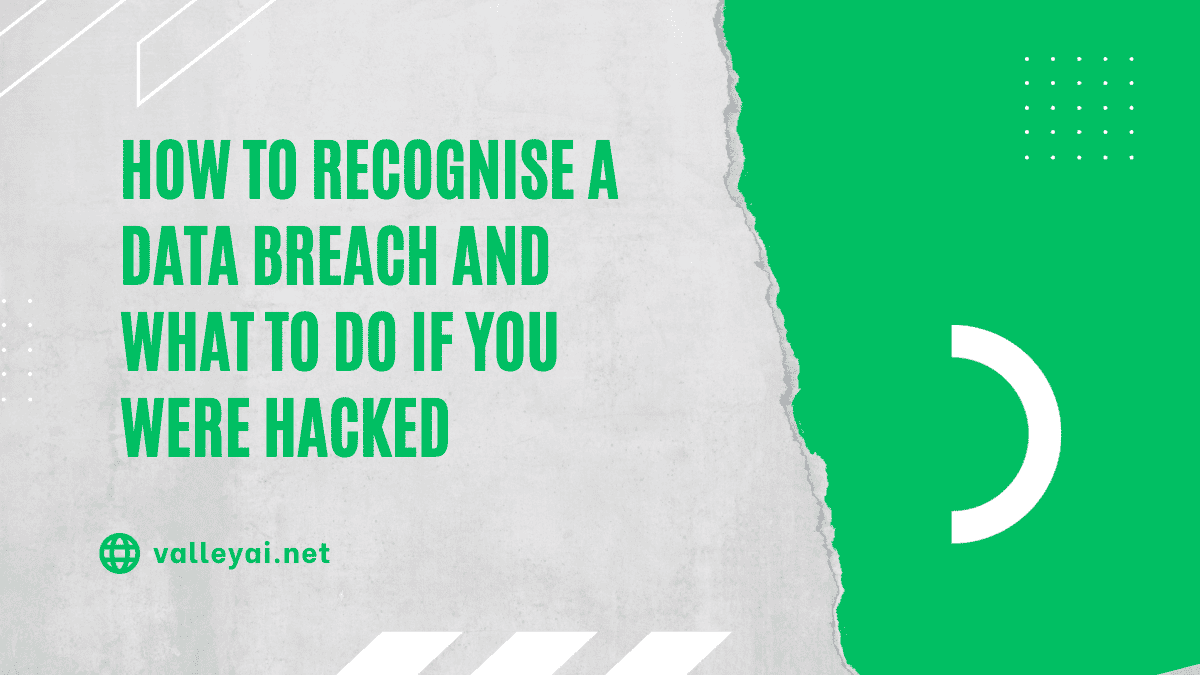It’s all too common that users have no clue their data was stolen until they see large sums disappearing from their bank account balance.
For many, the damages are overwhelming. But in reality, they could’ve been mitigated rather easily.
Today, we’re going to break down the topic of data breaches: how in the world do you spot one? And what do you do in the aftermath of a breach?
All your questions will be answered and more, so let’s dive right in…
5 simplest ways to spot a data breach
Enter your details into a Data Leak Checker
First and foremost, the simplest way to check if your data was included in a breach is to enter your data into a “Data Leak Checker.”
The most popular is Have I Been Pwned?, which primarily focuses on leaked email addresses. Luckily, plenty of premium cybersecurity apps come with similar web-scraping features now.
Source: Mohamed Hassan
Suspicious expenses on your bank statement
Are you seeing purchases you never made on your credit card statement? Well, I hate to break it to you, but your data has likely been stolen.
Stolen payment data is often a clear-cut sign of a phishing attack, in which you were tricked into revealing private information.
Receiving an email from the breached company
Most professional companies will notify every affected user of a data breach, even when it costs them their reputation.
The surest sign of a data breach is an email from the breached company. It will likely even include the specific data types that were leaked. Just be sure it’s not another phishing attempt.
Check your credit score
Many data thieves are scrambling for data for one reason only — identity theft. Therefore, you can check if your identity is secure by ordering a credit report.
Stolen credentials are often used to take out loans and credit cards, so an instant impact can be seen on your credit score.
Keep up-to-date with cybersecurity news
Let’s be honest: unless you’re aware of a data breach, you might never know that your data has been stolen.
Unfortunately, for some, this means you need to read the news. Keeping in the loop with cybersecurity news will ensure you’re aware of any major breaches and advancements in cybersecurity tools.
7 must-things to do in the wake of a data breach
Identify your attack surface
Whether you’ve just been involved in a data breach or are just trying to mitigate one, getting a clear view of your “attack surface” is a valuable asset.
Your attack surface is data, software, or anything else that would be targeted in a hack. What would a hacker want to steal? These are the areas that will need the most protection in the future.
Change passwords on absolutely everything
If you haven’t already, change your passwords! For many victims, poor password security may have caused the data breach in the first place.
Choose obscure passwords that closely resemble code (e.g., “M4C:0t70u&p”) rather than real words (e.g., “Daughter2023”). An easy tip for secure passwords is: that if you can remember your password, it is easy to crack.
Install cybersecurity applications
If you’re not protecting your data with at least a free antivirus for mobile and computer devices along with a virtual private network (VPN), then you can’t be surprised that your data was leaked.
The list of premium cybersecurity protections goes on and on:
- High-quality antivirus (“free” just means you pay with your data);
- VPN with multi-device functionality like the Surfshark VPN application;
- Password managers that centralize and scramble your passwords;
- AI-powered threat detection software.
Enable MFA on all accounts
Multi-Factor-Authentication (MFA) requires two or more forms of identity verification before allowing access to private data and accounts.
Even with stolen credentials, MFA can stop intruders at the door. If your accounts aren’t already MFA-enabled, ensure you head into your settings and turn it on. It may be a little annoying, but it’s worth the extra protection.
Learn the signs of a phishing attack
With the increasing influence of AI chatbots like ChatGPT, phishing attacks are getting more sophisticated and effective.
Make sure to take on some phishing training to keep up to date with how cybercriminals are using this technique. As methods change with new technology like chatbots, it’s important to regularly retrain yourself.
Constant monitoring of accounts
These days, it’s super simple to monitor all of your accounts from your mobile devices. This also means that, no matter the leak, it can probably be handled remotely.
Thanks to the accessibility of modern accounts, the moment you realize a data breach, you can take action immediately. Don’t wait until it’s too late — if you notice suspicious activity on your accounts, act right away.
Freeze your credit line
What are you waiting for if you’ve been breached and you haven’t frozen your cards yet? Every passing moment is another chance for your data and funds to be stolen.
Put a freeze on all of your stolen credit cards, and maybe even on your credit entirely. This may not take data out of the thief’s hands, but it stops them from spending any of your hard-earned money.
Conclusion
Well, there you have it—now you don’t have any excuse next time your data is included in a breach.
With the various ways to check for data breaches and multiple effective recovery methods, you’re equipped with everything you need to defend against the hordes of data thieves.
- Understanding the Landscape of Cloud Vulnerability Management - March 25, 2024
- Quality Assurance Strategies for Startups: Ensuring Software Reliability - March 5, 2024
- Working of NLP to Improve Copywriting in AI Paraphrasing Tool - February 28, 2024

